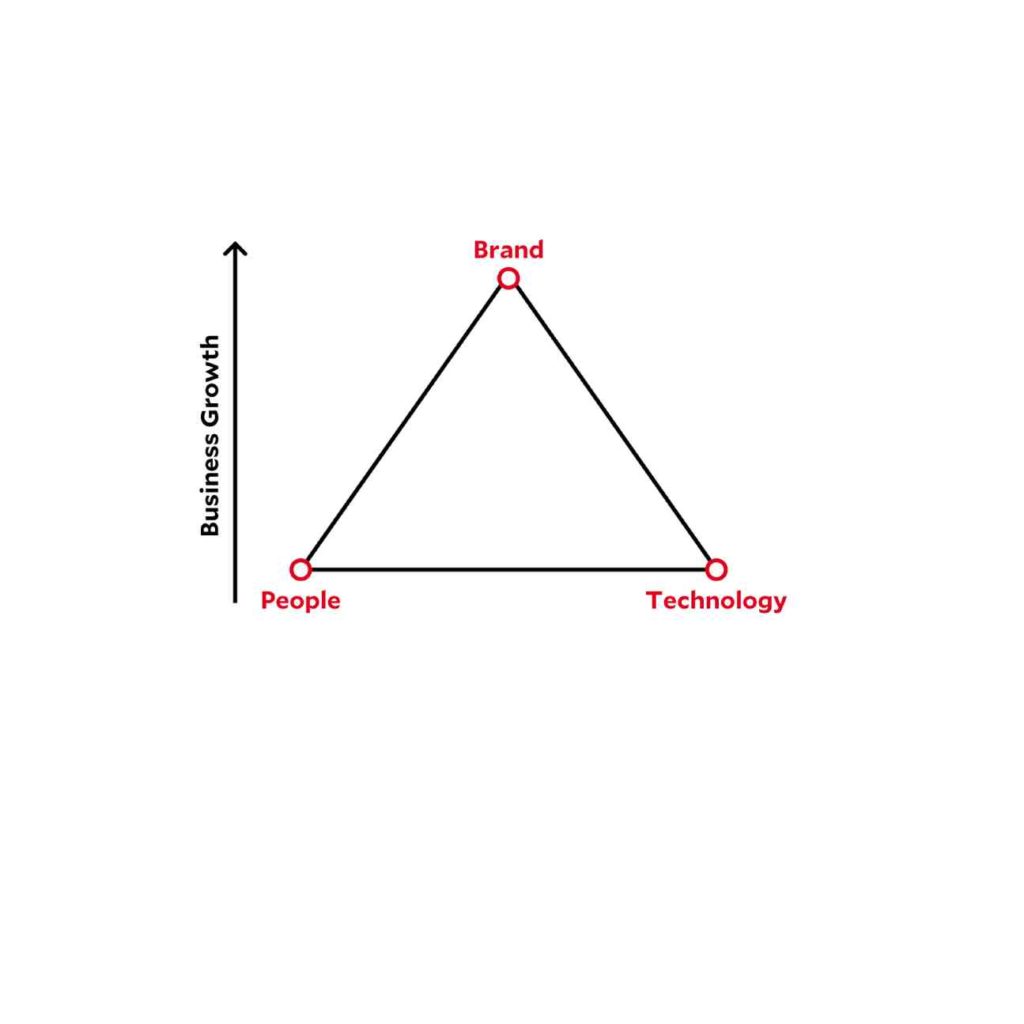
Growth is fundamental to life. It is an inherent part of being human. So is change.
Over the last two decades, our lives have been transformed in remarkable new ways. These shifts in behavior, expectations and experiences provide incredible opportunities for business growth, but keeping up with them poses new challenges. One of the most critical ways to turn change into growth is by building and constantly developing a strong brand.
Brands are how we form opinions and find meaning in a business. They embody purpose and values, help human beings understand a business on a deeper level, and ensure businesses act in line with people’s expectations. Consumers use this understanding to make better choices, demonstrate loyalty and determine value.
Brands are a human construct, and are at the heart of any successful business.
This is as true internally as it is externally. Brands start with humans on the inside and are ultimately delivered to humans on the outside, using technology as a primary means of interaction and a powerful platform for engagement. At a time when speed to market, customer centricity and cultural alignment are more important than ever, brands are the key to change and to growth.
Purpose that moves people
If brands start and end with people, it’s important to acknowledge a significant generational shift in the way people interact with, and what they demand from, brands.
Both as employees and customers, younger generations have very different views about the brands they choose. They expect a brand’s purpose and values to align with them, and their desires for better communities and a better world.
It’s important to be clear about the nature of purpose. It’s the organization’s reason for existing: its most fundamental beliefs and highest-order aims. It isn’t just about repackaging a corporate social responsibility strategy.
Brands with a strong sense of purpose draw people in, aligning people inside the organization while driving momentum outside of it.
Breaking silos within the organization by freeing up communication across the business helps organizations operate at the speed of life. A strong, clear brand purpose helps a business change successfully by ensuring everyone moves in the same direction at the same speed.
Technology that accelerates growth
The acceleration of technology impacts every part of a business. From automated production to self-driving delivery vehicles, from programmatic media buying to the rise of AI in shaping customer interactions. And new models are emerging that help companies understand how and where to invest to ensure brand-driven business profits.
More importantly, technology is changing people’s behaviors and expectations faster than we can create and innovate. So how do brands play into this evolving dynamic as the gap between desire and fulfillment diminishes? This is where technology plays a pivotal role.
It can be used to create a detailed image of customers, bringing brands closer to people every day. When technology is fully integrated with the brand, it can shrink the desire-fulfillment gap, fast.
The challenge is creating a truly branded experience. While technology offers proximity, engagement is not a given. Merely implementing the latest technology without the brand as a filter misses the opportunity to create a powerful bond between people and business.
And while innovation is crucial, it doesn’t necessarily put a business ahead in the market—it may simply keep it on par. Any company, from digital native to established organization, that puts technology first and brand second isn’t likely to sustain growth. While people may enjoy the experience, they aren’t necessarily connecting with the company on the deeper level that contributes to building long-term loyalty.
Brands humanize technology, making it meaningful by yielding experiences that create lasting value.
Brands are the synergy between people, technology and business
Since brands are the mechanism by which people relate to businesses, they play a powerful role in creating deep and valuable connections to the businesses via technology.
Placing the brand at the center of the business agenda smoothens the tension between technology and people, giving rise to a new type of synergy that’s essential to all sides of the business: On the inside, brands align culture and capabilities for growth, directing innovation and resource allocation; on the outside, brands provide a platform to deliver a unique and valued experience that reflects not just what people want, but what they belive in.
For Best Global Brands 2015, we highlighted the coming wave of personalized technology marked by The Age of You. In this age, we operate for the individual, using data and technology to offer products and services, communication, environments—in fact, the entire customer experience—tailored to individual needs. The next great challenge for brands is the ability to automate these complex moving parts without losing the personality and humanity that’s characteristic of the greatest brands.
In conclusion
The only constant is change and we are living in one of the most exciting periods of change since the Industrial Revolution. The changes we are observing are societal, attitudinal, technological, economic, industrial and impact every aspect of commerce and life. Within this ever-shifting context, growth becomes ever more challenging. Businesses need a medium that clearly communicates purpose and energizes cultures, a platform upon which to create engaging and unique experiences, a means to stay relevant, meaningful and valued.
In this changing world, businesses need brands more than ever.—CONTRIBUTED
So, for future Growth in a Changing World:
1. Brands: are a business strategy brought to life, and are the primary means for differentiation and growth.
2. People: brands are about people and how they connect to the purpose of a business.
3. Technology: helps accelerate growth and customer proximity, but only through brands can it deliver meaningful engagement.

